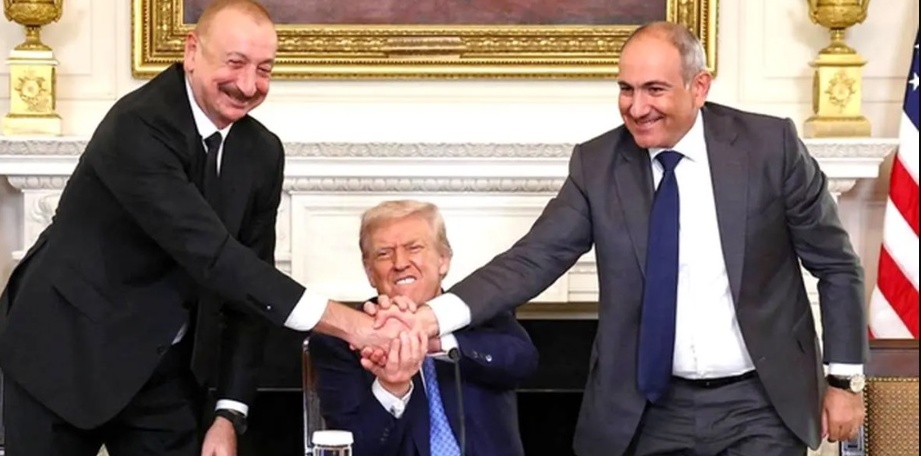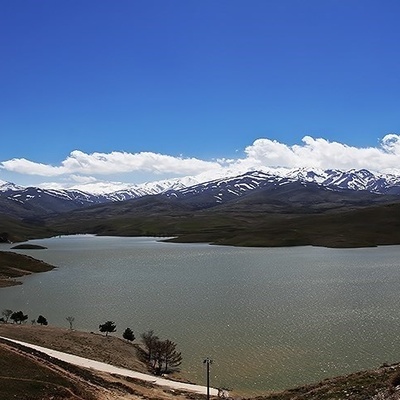SAEDNEWS: On August 8, Armenia and Azerbaijan signed a US-brokered peace agreement at the White House, reviving the decades-old “Zangezur Corridor” plan.

According to Saed News, On Friday, August 8, 2025, a peace agreement between the Republic of Azerbaijan and Armenia was signed at the White House under direct US supervision. According to many experts, the deal is not aimed at sustainable peace, but rather at strengthening NATO’s military and strategic presence in the South Caucasus.
In recent weeks, numerous analyses and warnings have been voiced over the United States’ creeping moves to revive the long-discussed “Zangezur Corridor” plan—now rebranded with labels such as the “Peace Crossroad,” the “Trump Corridor,” or the “Syunik Corridor”—being imposed on the region’s geopolitical structure.
In an interview with Fars News Agency, Dr. Dariush Safarnejad, a university professor and Eurasia affairs expert, examined the hidden dimensions and threats of this agreement—threats that directly target Iran’s national security and indirectly impact Russia, China, and even India.
Safarnejad stressed that the Zangezur Corridor has a 34-year history, from the very days following the collapse of the Soviet Union and the independence of Azerbaijan and Armenia. From the start, he argued, the project has been on NATO and Israel’s agenda, but its implementation was blocked by resistance from the Islamic Republic of Iran and Russia.
The latest version of the plan—marketed under names such as “Peace Crossroad” and “Trump Corridor”—seeks to place a 42-kilometer stretch of territory under the land, air, and space control of a US- and NATO-led consortium. According to Safarnejad, this means Armenia is effectively handing over its land for 100 years, with the ultimate goal of severing Iran’s connection to Armenia, Georgia, and the Black Sea.
He warned that implementing the plan would dismantle Iran’s role in the North–South transport corridor and pave the way for Hebrew, Turanian, Takfiri, and NATO-linked flows through Iran’s northwestern borders. He argued that Iran must employ a multi-pronged diplomacy in coordination with Russia, China, and regional states to prevent the “Ukrainization” of the Caucasus.
Safarnejad also called on Iran’s foreign ministry to formally oppose the transfer of Armenian borderlands to NATO and to block all operational pathways for the plan.
Why Russia’s response has been muted
The expert noted that Russia’s behavior in the Caucasus resembles that of a “hibernating bear” — acting in hard-power terms but slow to react until its interests are directly challenged. He said the peace agreement between Armenia and Azerbaijan was concluded under a media blackout, catching Moscow off guard.
Under the new deal, the Zangezur Corridor—previously envisioned as being managed by individual countries—will now be administered by a consortium, behind which stand NATO, led by the US and UK. In the front row of the arrangement are the US, Turkey, Armenia, Azerbaijan, Israel, and the EU.
Safarnejad explained that the corridor’s planned width of 5 to 15 kilometers indicates a vast project that would encompass not only land routes but also air and space control. Armenian Prime Minister Nikol Pashinyan, he said, has handed over management of the corridor to the US–NATO consortium for a century, reportedly in exchange for pledges that both Armenia and Azerbaijan will be admitted to NATO in the coming months.
He predicted serious tensions ahead between NATO and Russia in the South Caucasus, urging Iran to maintain its red lines, as its decades-long resistance has been the main obstacle to the plan’s implementation until now.
Regional implications
Safarnejad dismissed speculation about a US–Russia deal over Ukraine, stating that no such agreement exists and that the Ukrainian file has only grown more complex. He drew parallels with Georgia’s territorial fragmentation and warned that with the peace deal removing legal barriers, Armenia and Azerbaijan’s NATO accession could happen within months—triggering direct confrontation.
The plan, he said, threatens not just Iran but also Russia, China, and India, given NATO’s eastward expansion.
Iran’s options
Safarnejad stressed that Iran must quickly forge a coordinated defense and political diplomacy strategy with Russia, China, and other Caucasus and Central Asian countries to block the American initiative. He warned that the plan’s implementation would put Iran’s border with Armenia in NATO’s hands and eliminate Iran’s access to Armenia, Georgia, and the Black Sea, effectively erasing the northern section of the North–South corridor.
He accused Pashinyan of deception, saying that since coming to power through a US-backed “color revolution” seven years ago, the Armenian leader has systematically implemented American agendas—from ties with Israel to dissolving Nagorno-Karabakh’s autonomy—and is now ceding his country’s land for a century.
Safarnejad concluded that the Zangezur Corridor would become a gateway for Takfiri, Hebrew, Turanian, and NATO-linked movements, directly impacting Iran’s national security. He urged Tehran to assert its red lines to Azerbaijan and align with Russia and China in a multi-layered diplomatic strategy to stop the Caucasus from becoming another Ukraine.

